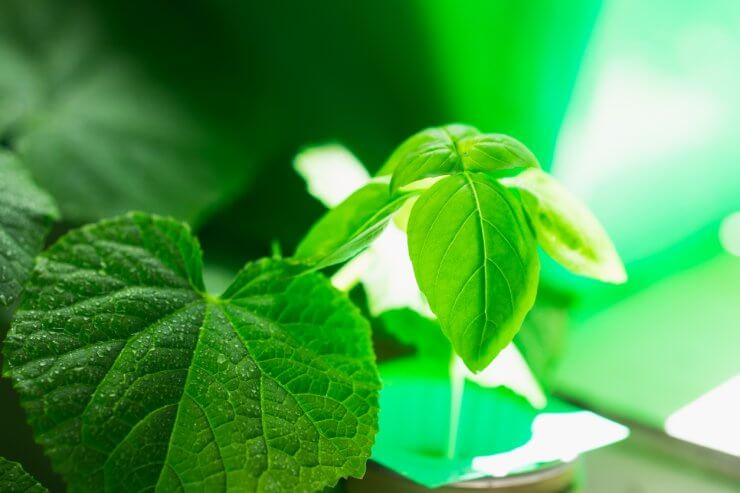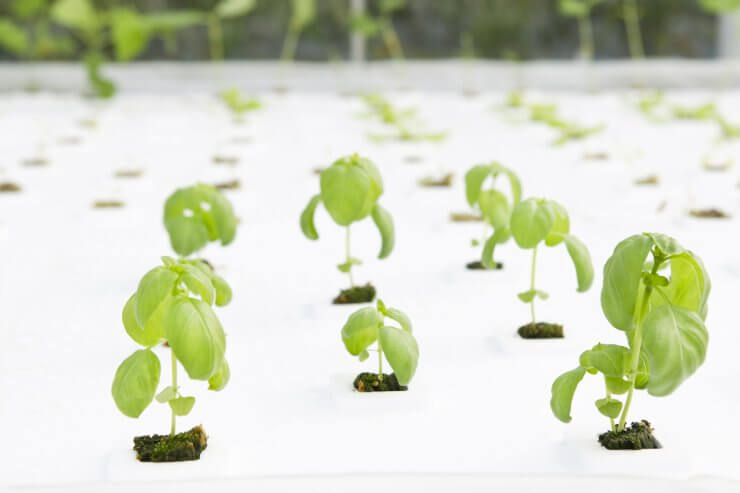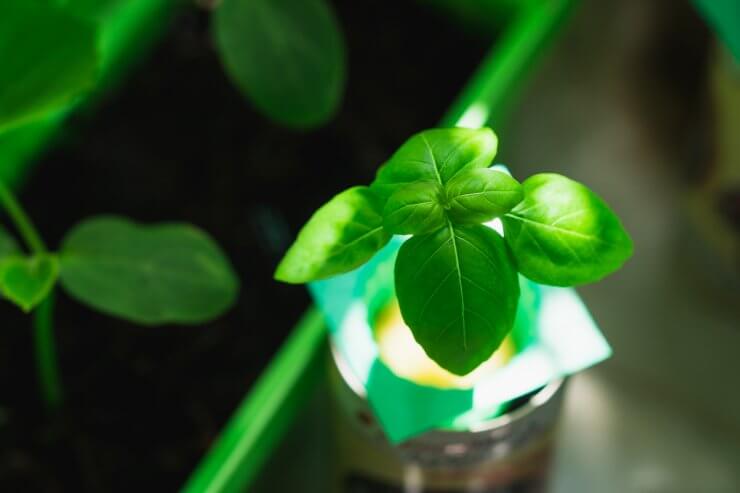
I don’t have great luck growing basil indoors in the winter, and I know I’m not alone in this. I used to supplement my basil habit with store-bought container basil or even a fresh plant here and there, but the conditions in my area and in my home have always given me trouble. And like any other herb, basil tastes best when fresh, so I prefer to grow my own. That’s why I think everyone should have a countertop hydroponics system even if it’s just a small one for herbs. Basil takes just 10 days to sprout, and within a month you’ll have plenty of basil that will keep on growing.
If you’re interested in knowing how to grow basil hydroponically, then this short guide below can definitely help out. I also made a 10-minute video on Hydroponics for Beginners in our February 2022 issue of Food Gardening Magazine.
Discover the 3 top options for growing vegetables indoors—when you access the FREEBIE Growing Vegetables Indoors for Beginners, right now!

The Benefits of Knowing How To Grow Basil Hydroponically
My number one tip for growing basil hydroponically is to grow a few varietals at once. Why? Because it’s fun, colorful, and you’ll find out which types you like best!
But before diving into how to grow basil hydroponically, let’s have a quick review on what hydroponics is. In its simplest terms, hydroponics involves growing crops without soil. Depending on the hydroponic system you have in place, plants can either grow directly on liquid nutrients or when they’re anchored to an object like peat moss, coconut fibers, rockwool, or perlite.
Lots of people favor growing their plants hydroponically because of the many benefits they can gain from this method. When you know how to grow basil hydroponically, you can enjoy the following advantages compared to when you cultivate this herb outdoors:
- Faster yields: As mentioned, it takes around 28 days for basil to grow a decent amount hydroponically, though it will sprout within 10 days. This is if conditions are tailored to your plant, but it’s still faster than growing basil outdoors in soil. You also have more yields with a higher quality using hydroponics as plants are in direct contact with nutrients rather than getting them from the soil.
- Prevent diseases and pests: While soil agriculture is common, there are many soilborne diseases — such as root rot — that your plant can catch. Fungi, bacteria, and viruses can also fester within soil, which can affect your basil plant in the long run. Parasites, like some nematodes, can also thrive in soil. However, with hydroponics you don’t have to worry as much about diseases and pests spreading to your plant. Nutrient deficiencies are much more common, but fixable.
- Controlled environment: Growing your basil outdoors means exposing the plant to changing weather and the elements. Hydroponics systems, on the other hand, can foster a more controlled environment wherein your basil can enjoy a microclimate that promotes their optimal growth.

Hydroponic System Basics
When you’re ready to grow basil hydroponically, it pays to know the different kinds of growing mediums for different hydroponic systems. Generally, there are two ways to set up your system: with or without a solid growing medium.
Liquid Hydro Systems
These don’t use a solid growing medium. This setup basically lets the roots of your basil plant bathe directly in nutrient solution. It has three main types, namely:
- Nutrient film technique (NFT): This uses long gutters to hold the plants.
- Deep-water culture (DWC): Crops are grown in tubs or basins, with their roots dangling in nutrient solution.
- Aeroponics: This method is a combination of the first two methods, but is less commonly used. The roots of the crops may dangle from plugs holding seedlings or attach to stones, and they may or may not be sprayed with the nutrient solution at regular intervals.
Substrate Hydro Systems
This type of setup uses solid growing mediums instead of soil. Some of the most common materials used are rockwool, coconut fibers, and peat moss. It’s two main types are:
- Container culture: As the name suggests, containers like pots, buckets, grow bags, or tubes are used to hold the solid growing mediums in which the plants are anchored.
- Slab culture: These long, flat slabs, typically made out of rockwool or coir, are used to grow plants. Each slab can vary in size depending on the crop and the conditions needed. Each slab is wrapped in a biodegradable film or plastic that keeps the nutrient solution intact.
Whatever you use is fine. This is a very technical outline, but most consumers buy into substrate container systems, like Aerogardens.

Tips for Growing Basil in a Hydroponic System
Learning how to grow basil hydroponically doesn’t stop at just setting up the right hydroponic system. Getting your basil seeds to germinate needs a little more effort compared to other crops. In particular, basil seeds can germinate between three and 10 days provided the temperatures are within the 75-degree range. Other things you need to do to successfully germinate and grow basil are:
- Use enough heat and light: Warmth is essential for basil plants and they need at least 14 hours of sunlight every day. 20 hours per day of heat lamps or heating pads will do wonders for basil in your hydroponic system, particularly when germinating.
- Regular pruning: Keeping your basil healthy requires regular pruning because it can grow pretty fast. You’ll know it’s time to prune when your basil starts developing second leaf nodes for branching. Additionally, remove any early flower buds so it doesn’t bolt, and dry leaves, so only the healthy ones remain.
- Let the air circulate: Humidity is needed for your hydroponic basil to grow, but make sure it doesn’t exceed 60% in your greenhouse. Avoiding stagnant air by using a fan can prevent problems such as mildew growth.
- Take note of pH levels and use a good solution: For your basil to thrive, use a hydroponic solution that’s high in calcium, nitrogen, and potassium. Similarly, aim for pH levels within the 6.0 to 6.2 range.
Let me know if you have any other questions about growing basil in the comments below.
Discover the 3 top options for growing vegetables indoors—when you access the FREEBIE Growing Vegetables Indoors for Beginners, right now!




